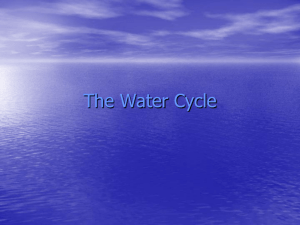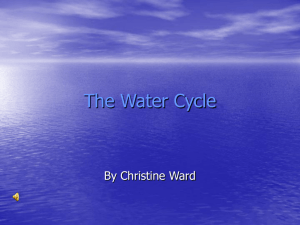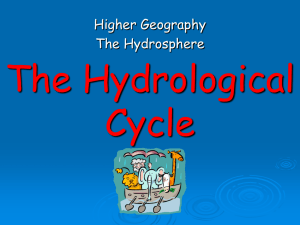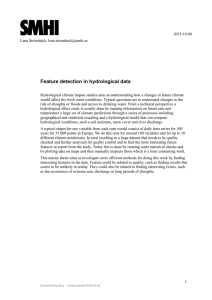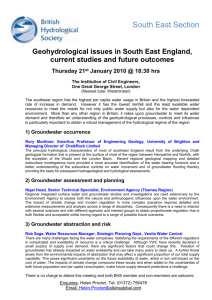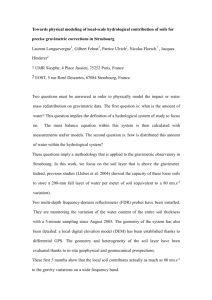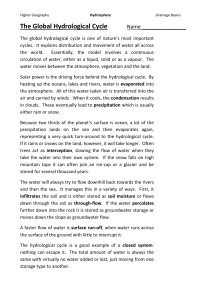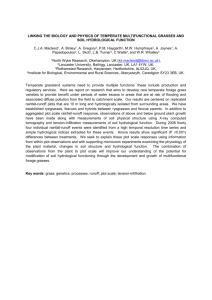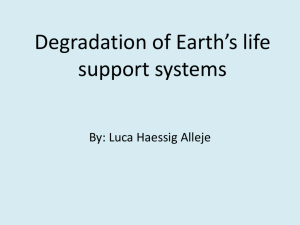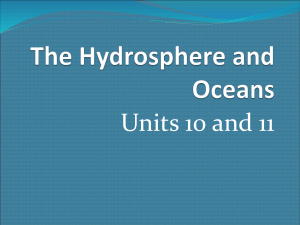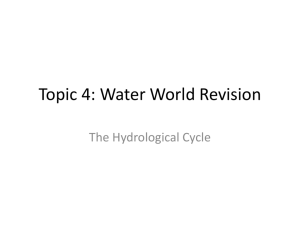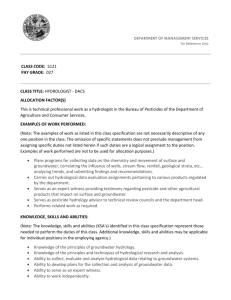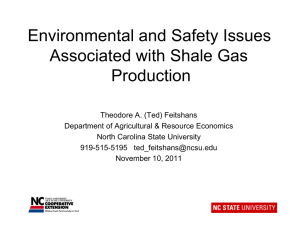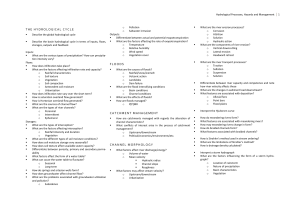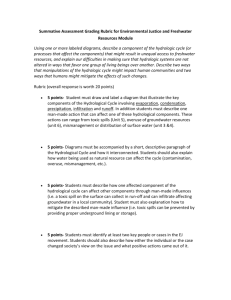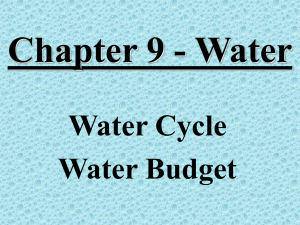The Global Hydrological Cycle
advertisement
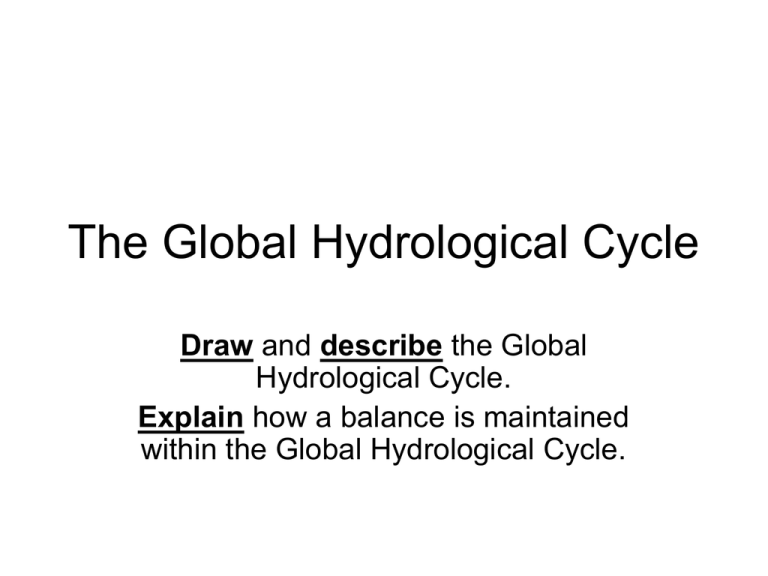
The Global Hydrological Cycle Draw and describe the Global Hydrological Cycle. Explain how a balance is maintained within the Global Hydrological Cycle. Water as a finite resources • 1.4 billion cubic kilometres of water within the planets hydrosphere. • 3% is freshwater. • 77.2% of this is in cold storage. • 22.4% is in groundwater storage. • 0.35% in lakes and swamps. • 0.01% in rivers and streams. Uneven distribution of water • A small amount available for human use and consumption. • Usually in the wrong place and the wrong time. • From earliest times people have sought to harness and control the rivers. Hydrological Cycle • Evaporation: The transfer of water from the sea to the air as water vapour. •Condensation: Water vapour (gas) changes back into water (liquid). It forms small droplets which are visible as clouds. •Precipitation: Water falls to earth as either liquid (rain) or in a frozen state (snow, hail). •Stream / Surface Run Off: Most water returns to the sea in the form of rivers. •Evapotranspiration: evaporation of moisture from vegetation •Ground water Flow: Some water returns to the sea as groundwater through soil and rocks. •Infiltration: The point at which rainfall seeps into soil. •Percolation: The seepage of water downwards through rocks. •Throughflow: The movement of water downwards through soil back to the sea. •Groundwater Zone: Storage area for water which is slowly released back to the sea via springs and rivers. •Interception – When precipitation is prevented from falling to the surface by leaves/dense forests.

